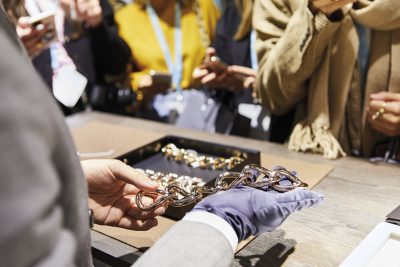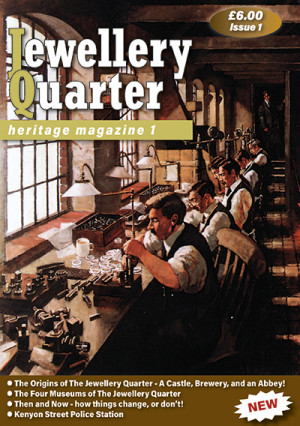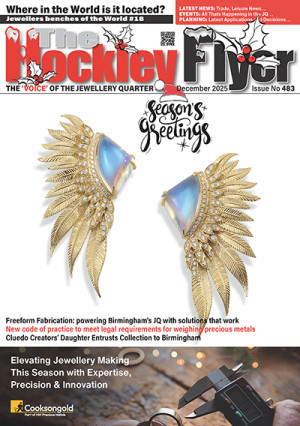 At Inhorgenta Munich from February 11 to 14, 2022, the Inhorgenta Trendfactory with its lectures, seminars and discussions will offer a valuable knowledge platform on current challenges the jewellery, watch and gemstone industry faces. One focus topic will again be “The future of retail.” Experts Marius Schafelner (Dr. Scharenberg Online) and Theresa Schleicher (Future Institute) already provide some insights, and the German Watch Study 2021 also raises new perspectives.
At Inhorgenta Munich from February 11 to 14, 2022, the Inhorgenta Trendfactory with its lectures, seminars and discussions will offer a valuable knowledge platform on current challenges the jewellery, watch and gemstone industry faces. One focus topic will again be “The future of retail.” Experts Marius Schafelner (Dr. Scharenberg Online) and Theresa Schleicher (Future Institute) already provide some insights, and the German Watch Study 2021 also raises new perspectives.
Online marketing should increase frequency in retail: Marius Schafelner is a jeweller and Managing Director of Dr. Scharenberg Online, an IT service provider for jewellers—and winner of the Inhorgenta Next Generation Award 2020.
Mr. Schafelner, what trends do you identify?
From an industry perspective, the issue of direct to consumer needs to be emphasized. In recent years, manufacturers could learn from the experience in stationary retail that the direct, vertical channel to the end customer can be quite costly in terms of operational costs (e. g., rent, personnel). In the digital world, this direct route appears much easier at first glance. At second glance, especially digital marketing is costly and time consuming. Furthermore, particularly in the high-end segment, consumers like to buy from specialist retailers, even if they obtain advance information on the internet.
Where do you see the challenge in retail?
Linking online and offline media is the key to the future. In addition to knowing how to market oneself in the digital world, it is important to align these efforts in such a way that they also bring the desired increase in frequency in stationary retail along the customer journey. This is because the final purchase decision is made primarily in specialist stores.
Trends create conflicting priorities: As Managing Director of VORN Strategy Consulting and as a retail expert at the Zukunftsinstitut (Future Institute), Theresa Schleicher deals with the megatrends in retail, the new world of work and digitalization.
Ms. Schleicher, what do you think the retail industry of the future will look like?
The future retail landscape will be shaped by several major changes: we are increasingly seeing digital channels and hybrid concepts, and at the same time conscious, sustainable, and mindful shopping is coming to the fore. The luxury segment will grow in the sustainability sector in the future. And then we see the desire for strong individualization, but also the longing of public spirit and community. Customers want speed and availability, and at the same time a reason to pass time strolling. In summary, the future of retail lives from the conflicting priorities of social megatrends and their countertrends—and the arising innovations.
What trends do you identify?
Sustainability and digitalization are driving the market—and both trends go well together. But they also bring new challenges, such as more environmentally friendly e-logistics. Also, the trend of urbanization is influencing retail, causing a transformation and partial reduction of space in city centres. In turn, we are seeing the trend of maximum POS experience on a minimal footprint—from consulting to comprehensive experiences that attract people to the stationary POS.
Where do you see the challenge in retail?
The pressure for change is immense after the coronavirus. No retailer—no matter how big or small—can avoid change, as, during the pandemic and beyond, end customers strongly demand important developments, some of which have been known for years but have been sitting in retailers’ drawers (sustainable products and packaging, e-commerce, etc.). The task here is to bear the challenges in mind, but also provide a clear structure, and then to tackle them with real courage.
The watch industry is also facing fundamental change—results of the first German Watch Study 2021, published by Inhorgenta and Deloitte in October.
According to the German Watch Study—a study by the auditing and consulting firm Deloitte and Inhorgenta Munich—the marketing channels for the watch industry will change fundamentally. Compared to the previous year, the importance of influencers and social media has increased by seven percentage points to 35 percent.
The own network has also gained influence, while traditional marketing channels such as radio, television and the press are becoming less important. While the purchase decision is increasingly influenced digitally, also through corresponding research on the internet, a narrow majority of consumers (51 percent) still buys new watches in a store. In contrast, 49 percent prefer to buy online or via social media. Here, too, the difference between the generations becomes evident: among baby boomers, 55 percent prefer to buy in stores; among Generation Z, the figure is 23 percent. The ratio turns when it comes to buying online: 33 percent among Generation Z respondents’ shop on a branded website, while only 15 percent of baby boomers do.
More information:
🌐 www.inhorgenta.com





